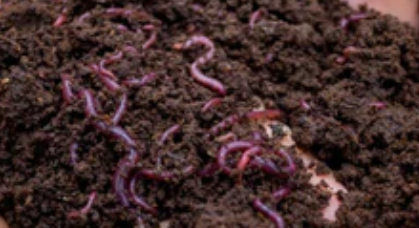
Vermicomposting is a sustainable way to manage organic waste and create a nutrient-rich soil amendment. Vermicompost is the end product of the vermicomposting process, which involves the use of earthworms to break down organic matter. Vermicompost is rich in beneficial microorganisms, plant growth hormones, and nutrients such as nitrogen, phosphorus, and potassium. In this guide, we will discuss how to make vermicompost and the benefits of using it.
Step-by-Step Guide to Making Vermicompost
Step 1: Choose a container
The first step in making vermicompost is to choose a suitable container. You can use a variety of containers, such as a plastic bin, wooden box, or even a bathtub. Make sure that the container has drainage holes to allow excess moisture to drain out.
Step 2: Add bedding material
The next step is to add bedding material to the container. Bedding material provides a home for the worms and helps to regulate moisture and temperature. Good bedding materials include shredded newspaper, cardboard, peat moss, or coconut coir. Add the bedding material to the container until it is about two-thirds full.
Step 3: Add organic matter
The third step is to add organic matter to the bedding material. Organic matter includes fruit and vegetable scraps, coffee grounds, tea leaves, eggshells, and other food waste. Make sure to chop or shred the organic matter into small pieces before adding it to the container. Avoid adding meat, dairy, or oily foods, as these can attract pests and create unpleasant odors.
Step 4: Add earthworms
The fourth step is to add earthworms to the container. You can purchase earthworms from a local supplier or use worms from your garden. Red wigglers are a popular choice for vermicomposting. Add about one pound of earthworms for every square foot of surface area in the container.
Step 5: Maintain the vermicompost
The final step is to maintain the vermicompost. Keep the bedding material moist but not too wet. Add more bedding material and organic matter as needed. Avoid overfeeding the worms, as this can lead to unpleasant odors and excess moisture. It is also important to keep the vermicompost out of direct sunlight and to avoid extreme temperatures.
Benefits of Using Vermicompost
Using vermicompost has many benefits for both the environment and plants. Here are some of the key benefits:
Improves soil structure and fertility
Vermicompost improves soil structure and fertility by adding beneficial microorganisms, plant growth hormones, and nutrients such as nitrogen, phosphorus, and potassium. It also helps to retain moisture in the soil, which can reduce the need for watering.
Reduces waste
Vermicomposting reduces waste by diverting organic matter from landfills. This helps to reduce greenhouse gas emissions and can help to mitigate climate change.
Increases plant growth and productivity
Vermicompost can increase plant growth and productivity by providing a rich source of nutrients and promoting healthy soil structure. The beneficial microorganisms in vermicompost also help to suppress plant diseases and pests, leading to healthier plants.
Environmentally friendly
Vermicomposting is an environmentally friendly method of managing organic waste. It does not produce harmful gases or toxins, and the end product is a natural and safe soil amendment.
Cost-effective
Vermicomposting can be a cost-effective way to improve soil fertility and reduce the need for chemical fertilizers. It also reduces waste disposal costs by diverting organic matter from landfills.
Sustainable
Vermicomposting is a sustainable way to manage organic waste and create a valuable resource for gardening and farming. It promotes the use of natural resources and reduces reliance on synthetic fertilizers and pesticides.
Tips for Successful Vermicomposting
Here are some tips to help you achieve successful vermicomposting:
- Use a suitable container with drainage holes to allow excess moisture to drain out.
- Use a suitable bedding material, such as shredded newspaper or cardboard, to provide a home for the worms and regulate moisture and temperature.
- Chop or shred the organic matter into small pieces before adding it to the container to make it easier for the worms to digest.
- Avoid adding meat, dairy, or oily foods, as these can attract pests and create unpleasant odors.
- Keep the vermicompost moist but not too wet. Add more bedding material and organic matter as needed.
- Avoid overfeeding the worms, as this can lead to unpleasant odors and excess moisture.
- Keep the vermicompost out of direct sunlight and extreme temperatures.
Conclusion
Vermicomposting is a sustainable and cost-effective way to manage organic waste and create a nutrient-rich soil amendment. By following the steps outlined in this guide and implementing the tips for successful vermicomposting, you can create a valuable resource for your garden or farm while reducing waste and promoting a healthy environment.